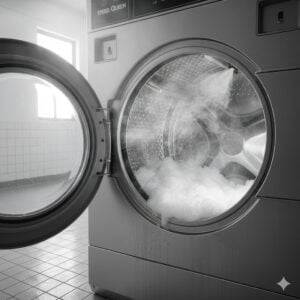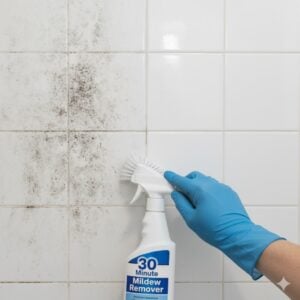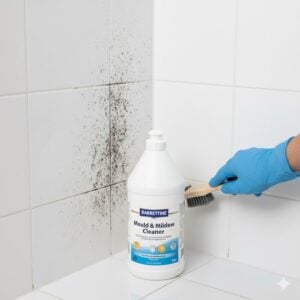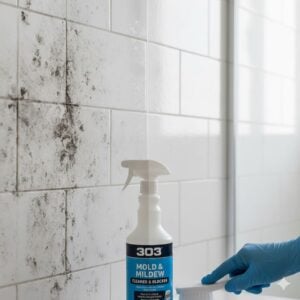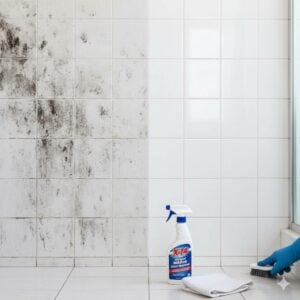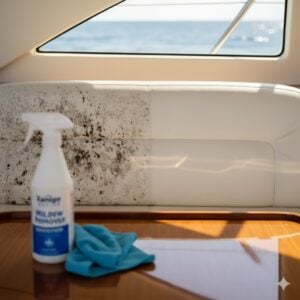If your AC kicks on and fills the room with a musty, unpleasant odor, you’re not alone. That mildew smell from the air conditioner is more than just annoying—it could be a sign of deeper problems with moisture, mold, or clogged components. In Dubai and across the UAE, where humidity from indoor cooling meets high temperatures, this issue is incredibly common. Fortunately, it can be fixed and even prevented once you understand the root causes.
In this article, we walk you through why your AC smells like mildew, what’s happening inside your unit, how dangerous it is to breathe in, and the step-by-step methods to eliminate it for good—especially if you live in an apartment or villa with central cooling.
Table of Contents
Toggle1. What Causes the Mildew Smell from an AC?
The mildew or musty smell coming from your air conditioner is typically the result of mold or bacterial growth inside the system. Air conditioning units, especially those running frequently in humid environments like the UAE, create condensation. When moisture builds up and doesn’t dry out properly, it becomes the perfect environment for mildew, mold spores, and bacteria to grow.
Here are the most common sources:
- Clogged or dirty AC filters: These trap moisture and organic material like dust, which bacteria feed on.
- Blocked drainage lines: If water isn’t draining properly, it pools inside the unit.
- Dirty evaporator coils or fins: These cold surfaces collect condensation and can harbor mold colonies if not cleaned.
- Duct contamination: In central AC systems, mildew can grow within the ducts if they are dusty and moist.
Without regular maintenance, these conditions only worsen. So if your AC smells musty every time it turns on, it’s not just in your head—it’s likely in the system.
2. Is the Mildew Smell from AC Harmful?
Yes, especially if it lingers or is associated with visible mold growth. While occasional odors may not pose an immediate health risk, prolonged exposure to mildew, mold spores, and bacteria released from an AC can lead to:
- Allergic reactions: sneezing, itchy eyes, runny nose
- Asthma attacks: mold spores can trigger respiratory issues
- Headaches and fatigue: from poor indoor air quality
- Persistent cough or throat irritation: especially in children and elderly people
In severe cases—such as if black mold is present—these symptoms can escalate. That’s why eliminating the source of the mildew smell is not just about comfort, but your health and safety too.
3. How to Get Rid of the Mildew Smell from Your AC
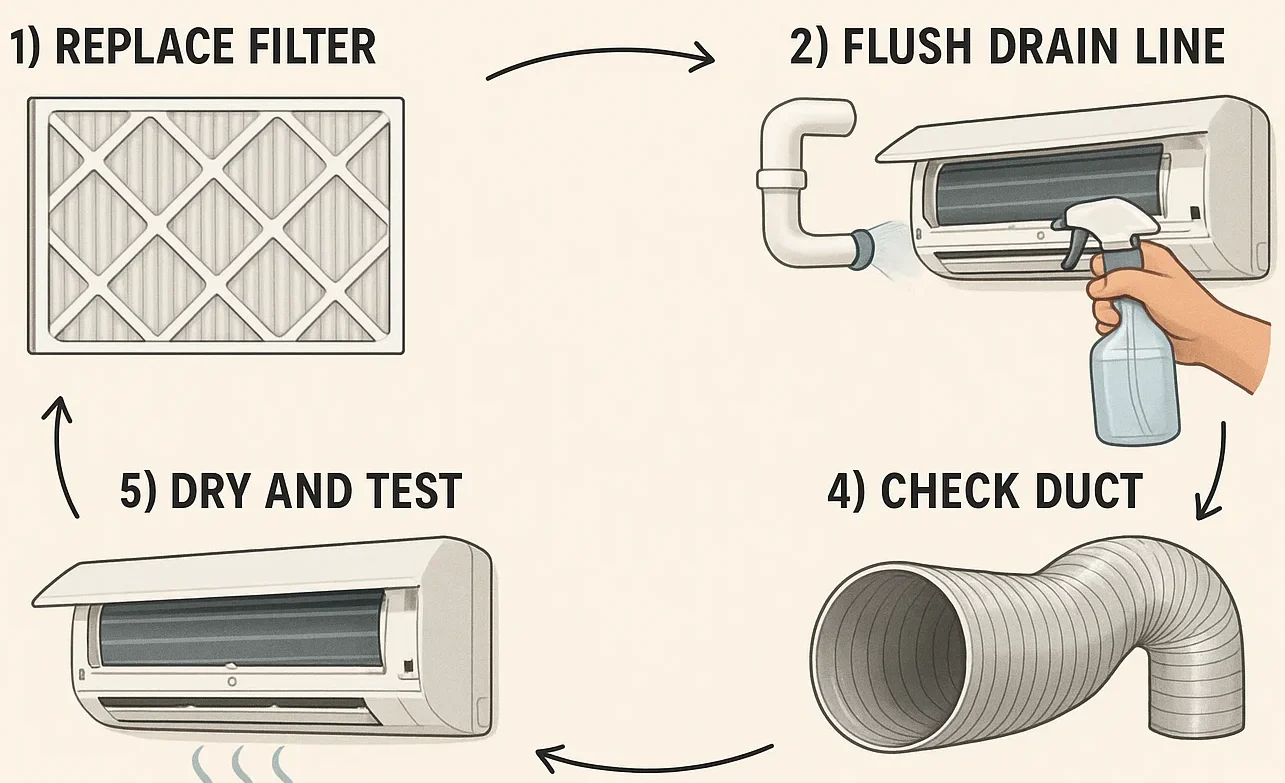
Getting rid of that musty odor requires more than spraying air freshener or installing a scented filter. You need to clean, disinfect, and possibly repair or replace key parts of your air conditioning system. Here’s how you can do it:
Step 1: Turn Off and Inspect the Unit
Before doing anything, turn off the AC and unplug it for safety. Then check for visible signs of mold, water pooling, or dirt buildup around vents, filters, and the indoor air handler.
Step 2: Clean or Replace the Filters
Dirty filters are the most common cause. Remove them, wash if reusable, or replace with fresh HEPA filters. You should do this monthly during high-use seasons like summer in Dubai.
Step 3: Flush the Drain Line
Use a mix of warm water and vinegar to clean the AC drain line, which could be clogged with sludge. This will help remove bacteria and stop future moisture backups.
Step 4: Clean the Evaporator Coil
If accessible, gently clean the coil using a non-corrosive coil cleaner. This is where mold loves to hide, especially if dust and condensation are trapped together.
Step 5: Check the Ductwork
For central AC systems, the ducts might need professional cleaning. If mildew has spread through the vents, regular wiping won’t be enough. You may need deep disinfection with fogging or ozone treatment from a certified cleaning company like Bio-On.
4. How to Prevent the Mildew Smell in the Future
Once the smell is gone, you don’t want it coming back. Mold and mildew can regrow surprisingly fast in warm, damp environments. These tips help you prevent future problems:
- Schedule regular AC maintenance: At least once every 6 months, especially before summer hits hard.
- Use a dehumidifier: In rooms with poor airflow or visible condensation, a portable dehumidifier helps reduce moisture that fuels mildew growth.
- Run your AC fan occasionally: This helps dry out internal components and reduces stagnant moisture.
- Keep indoor humidity below 50%: Use a hygrometer to monitor moisture levels and adjust your AC settings if needed.
- Fix any leaks: Roof or pipe leaks near the air handler must be sealed to prevent mold-friendly conditions.
These proactive steps not only extend your AC’s lifespan but improve your indoor air quality year-round.
5. When to Call a Professional
If you’ve tried cleaning the filters and lines but the smell keeps coming back—or it’s growing worse—it’s time to get professional help. A mold remediation expert can inspect hidden areas you can’t see, such as inside the ductwork, behind the evaporator coils, or around ceiling-mounted units.
In UAE climates, some AC systems are exposed to both desert dust and marine humidity—creating the perfect storm for mildew buildup. At Bio-On, we offer AC mold inspection, duct disinfection, and mildew odor elimination services across Dubai, Abu Dhabi, Sharjah, and beyond.
You can reach out anytime by clicking the contact button on the right-middle of this post. Our team works 24/7 and responds fast to help you breathe clean again.
Conclusion
That musty smell from your air conditioner isn’t just annoying—it’s a red flag. Whether it’s caused by dirty filters, standing water, or mold inside your ducts, ignoring it could lead to respiratory problems and a contaminated indoor environment.
Don’t let mildew take over your comfort. Clean your AC regularly, monitor humidity, and fix water issues early. And if the smell doesn’t go away, get in touch with experts who can fully diagnose and solve the issue.
We’re here to help make your air safe, fresh, and truly clean again—just click the contact button and let us handle the hard part.








